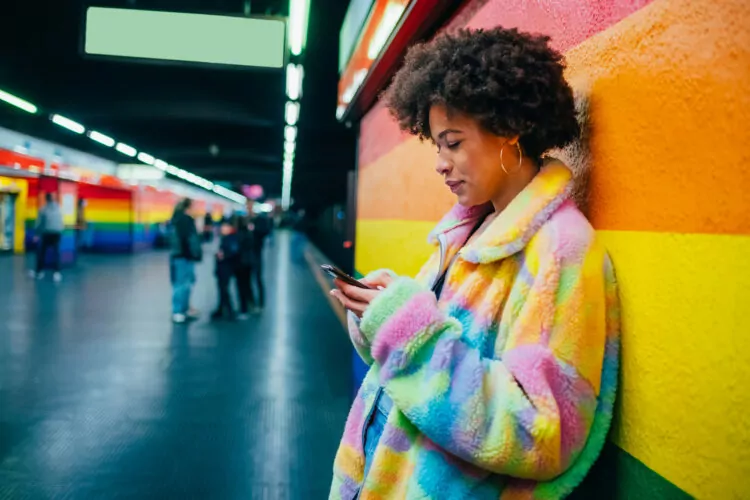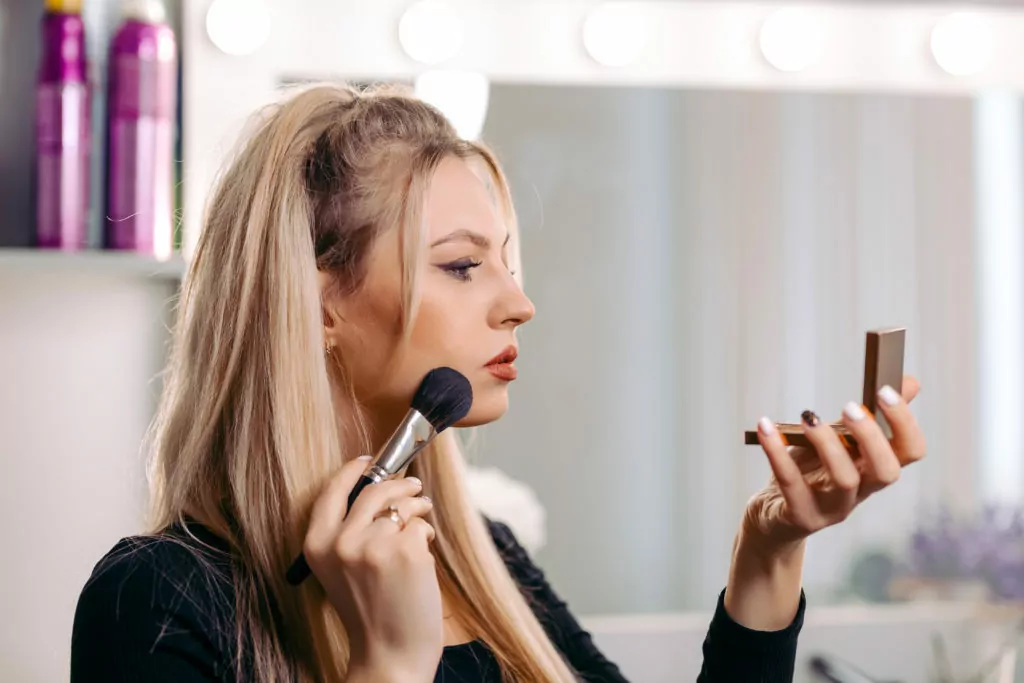Here’s everything about buying from TikTok ads being safe:
The answer is that it really depends on the ad and the product or service being promoted.
There are plenty of legitimate ads on TikTok, and buying from them is perfectly safe and an easy way to get things that you want.
There are also a lot of scams on TikTok, so it’s important to be able to recognize scams.
So if you want to learn all about how to safely buy from TikTok ads, then this article is for you.
Let’s dig right in!
- Adult Apps Like TikTok: Which Ones?
- TikTok Technology Stack: What Is It?
- Not Interested on TikTok: How to Undo?
- Active on TikTok: How to Tell if Someone Is?
- Back up TikTok Drafts: How To?

How Does TikTok Oversee Ads?

Let’s make sure that this concept is perfectly clear before diving deeper into the topic.
Ads on TikTok are not nefarious by default.
The simple fact is that TikTok has millions of advertisers, and from such a huge pool, you will see a mix of reputable and disreputable ads and actors.
Basically, it’s a mixed bag.
The rest of this conversation is going to focus on the negative sides of everything, but it should not be taken as a direct criticism of the app or its users.
The following is just how and why things can go wrong.
With that covered, let’s talk about how TikTok tries to stop unsafe advertising.
According to the TikTok website, the company is working on improving brand safety and ad safety.
The claim is that the primary ads (the ones that load when you first open the app) should be safe.
They “are working” on improving the safety of in-feed ads.
There are a few takeaways (again, focused specifically on the downsides).
First, TikTok offers no guarantees related to ad safety.
As far as the “TikTok promise” goes, any ad could be unsafe.
Second, TikTok is tacitly admitting that unsafe ads exist on the app.
So, as a TikTok user, you should probably err on the side of discretion when interacting with ads.
What Kinds of Ads Are on TikTok?

It might be easier to parse safe and unsafe ads if you know a little more about TikTok advertising in general.
The ecosystem focuses on video ads, which is not surprising considering that TikTok is all about video content.
In a manner of speaking, ads are another aspect of content on TikTok.
Basically, you can see video ads for everything.
You will see recognizable brands.
You’ll see things you’ve never heard of.
You’ll see them when you launch the app and interspersed through your personal feed.
They are even embedded into user-generated content.
Ads are inundated throughout TikTok.
With all of that, scams do exist, and we’ll go over some of the most common a little later.
How Is TikTok Regulated?

You might wonder why ads are allowed on TikTok in the first place.
You also might wonder what resources are available if you fall victim to a scam.
Well, these are complicated topics.
TikTok is a Chinese company.
Since it’s based in China, it is subject to Chinese regulations, which are considerably different from regulations in other countries around the world.
In order to operate internationally, TikTok does conform to some international agreements, but there are very few solid regulations.
Even among those regulations, there are very few things that governing bodies can really do about scams on TikTok.
As an example, the United States government tried to ban TikTok in 2020.
The regulations said that TikTok could not operate inside of the United States unless it sold U.S. control to a U.S.-based company.
Ultimately, that ban could never be enforced, and TikTok has not changed how it operates within the U.S.
Similar regulations in other countries have met similar fates.
Generally speaking, it’s difficult to internationally regulate tech companies.
It’s often even harder to regulate specific advertisers using such a tech company.
To keep all of this simple, there are severe limits on any recourse you can take if you are the victim of a TikTok scam.
You can still report the event to your own authorities.
You can also try to dispute charges through your card issuer.
Sometimes, these bodies can reverse the damage, and you’ll come out okay, but more often, the complicated nature of regulation on TikTok prevents a positive outcome.
Your best bet is to avoid scams in the first place, and knowing how some of them work can help.
What Are Common Scams on TikTok? (5 Dangers)

Getting back to the original question, is it safe to buy from TikTok ads?
The answer is still that it will sometimes be okay.
Other times, you’re walking into a scam, and these are the most common scams that you can expect on the app.
#1 Bait and Switch Apps

This is one of the more common and potentially frustrating scams that are run through TikTok advertising.
It works like this.
The TikTok ad you see promotes an app you can get from the Apple App Store or Google Play Store.
It seems interesting, so you click on the ad, and it takes you to your respective app store.
You download the app, and what you get is something entirely different from what you expected.
It might be overtly malicious, spamming you with ads, or even locking your phone for ransom.
In other cases, the switched app is less overtly malicious, but it can still be bad.
It might try to steal data from your phone.
That could be limited to user data that is sold to different tech companies or on the black market.
In a worse scenario, the app steals financial information or personal information that can be used to steal your identity.
There’s a clear example with iMoney.
Before we get into it, let’s be fair to apps on the store.
There are a lot of apps with some variations of “iMoney” in the title.
They are not the app being discussed here, and this is not intended to accuse any of those apps of wrongdoing.
Specifically, this is referring to an app titled “iMoney” that you actually can’t find on your app store.
That’s because iMoney is the switch, and a different app serves as the bait.
So, you try to download some other app that you saw advertised on TikTok, but then somehow you have iMoney on your phone.
iMoney then spams you with ads, and in some cases, severely impacts phone performance.
That’s a classic, documented example of bait and switch apps that use TikTok advertising.
#2 False Product Advertising

A bait and switch might feel like false advertising, but this scam is different in principle.
It’s similar to the type of false advertising that you might see in any other corner of the internet.
The idea is that a product or service is promoted via advertisements on TikTok.
Those ads might show positive reviews from prominent sources like CNN.
They might also cite celebrity endorsements to build credibility.
The problem is that those citations and endorsements are completely fabricated.
The product being advertised has never been reviewed by those parties.
Instead, the product has no “trusted” reviews to cite.
It’s just trying to convince you to give it a try.
When you do, you find that it doesn’t work as intended or at all.
One common culprit in this niche is diet pills.
TikTok ads have been known to promote a range of different diet pills with fake endorsements.
When users order the pills, what they get does not help them lose weight, and in some cases, the pills are even harmful.
This is an example of how the limitations of international regulations fail to protect users.
You can see similar scams for other products.
They might promote knock-off goods or real goods with dramatic markups that are not supported by the original makers.
#3 Adult Content

Adult content scams might be the most prolific scams on the whole internet, and TikTok is not spared their impact.
The traditional adult content scam promises free content, but not until you provide a credit card (or other payment information).
Once you sign up, you are automatically billed, despite promises of free trial periods or any other false promises in the scam.
In other cases, the adult content simply leads you to adware or other malicious software.
This is one of the easier TikTok scams to avoid.
Don’t trust adult content advertisements on TikTok.
It’s a safe rule of thumb and easy to follow.
An unfortunate added problem with these particular scams is that many of the images used to promote adult content are being stolen.
#4 Networking Scams

Networking scams are where an ad promises to help you grow your outreach.
This can be limited to TikTok, or they might promise a more generalized growth.
Either way, the promise is that they will increase the number of people following you, or they will promote you through their resources to increase your audience overall.
This is particularly enticing for business-related TikTok accounts.
Unfortunately, these scams don’t get reliable results.
The scam usually unfolds in one of two ways.
In the worst of the two scenarios, they take your money and run.
You receive literally nothing for the investment and are out the money you gave up.
Only slightly better is when they use obvious fake accounts and bots to increase your number of followers.
Technically, more accounts are following your content, but since they aren’t active users, your content can’t generate any valuable returns.
In the big picture, you’re still essentially getting nothing for your investment.
#5 Social Engineering

Social engineering scams are not always related to TikTok ads, but sometimes they are.
In this case, you might see an ad for a different app or service that provides people you can talk to.
It’s an old trick, and it still works.
Ultimately, you end up engaging with a bot or a scammer.
They try to get personal information out of you through the conversations you have.
That personal information is either sold on markets that value such things, or it is used to steal your identity.
Neither scenario is ideal.
On TikTok, there are largely two avenues this interaction can take.
If you follow an ad to a conversation, it will typically take you to a different communication platform.
So, clicking on the ad probably follows a link to another app in the store or a specific website where you can have your conversations.
But, TikTok provides communication on its own.
You might instead directly interact with a bot on the app itself. The end result is still the same.
The bot’s owner is trying to get personal information from you that can be sold or used to steal your identity.
Pretty in Mirror, Ugly in Flipped Phone Pictures?

Have you ever seen yourself in a flipped photo?
Feel that you look pretty in the mirror or in regular photos, but ugly in flipped phone photos?
Most people see themselves in a mirror every day, so you perceive this as the original image.
So when you see yourself in phone pictures, your face seems to be the wrong way, then you are used to seeing it.
As a result, your brain is the one telling you that the image is ugly.
It’s psychological.
Learn all about why your face looks pretty in the mirror but ugly and asymmetrical in flipped phone pictures with this in-depth article.

